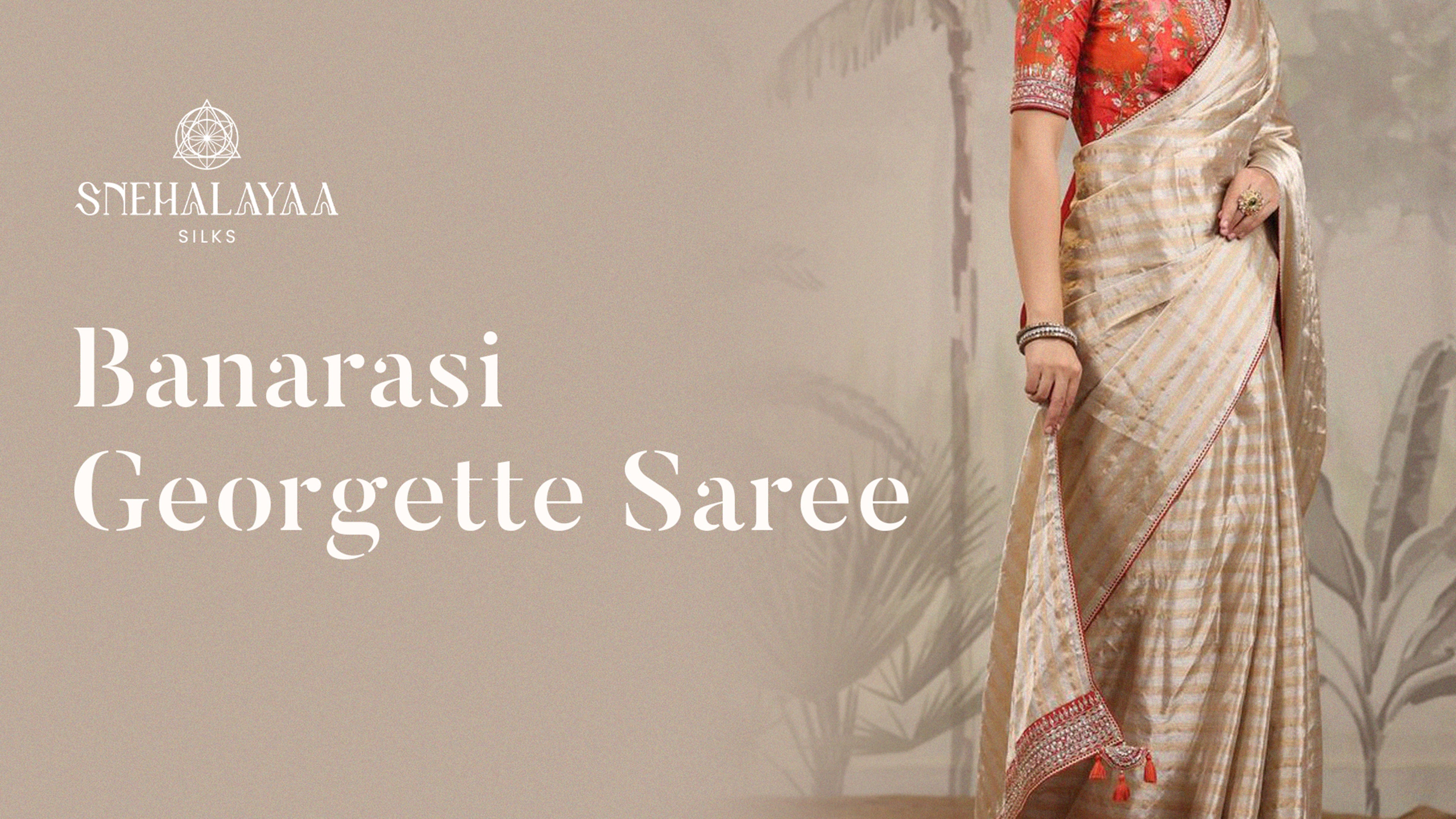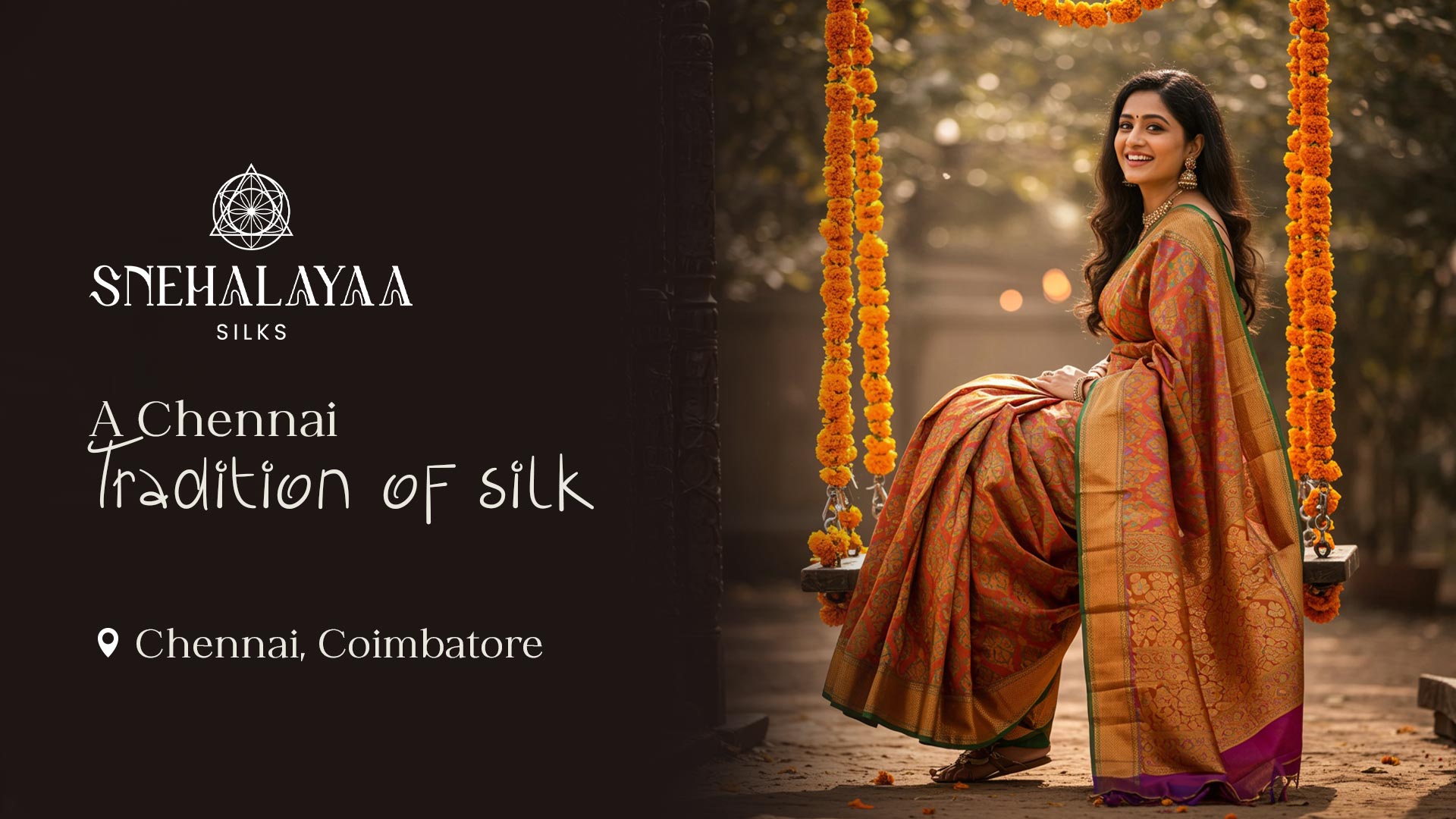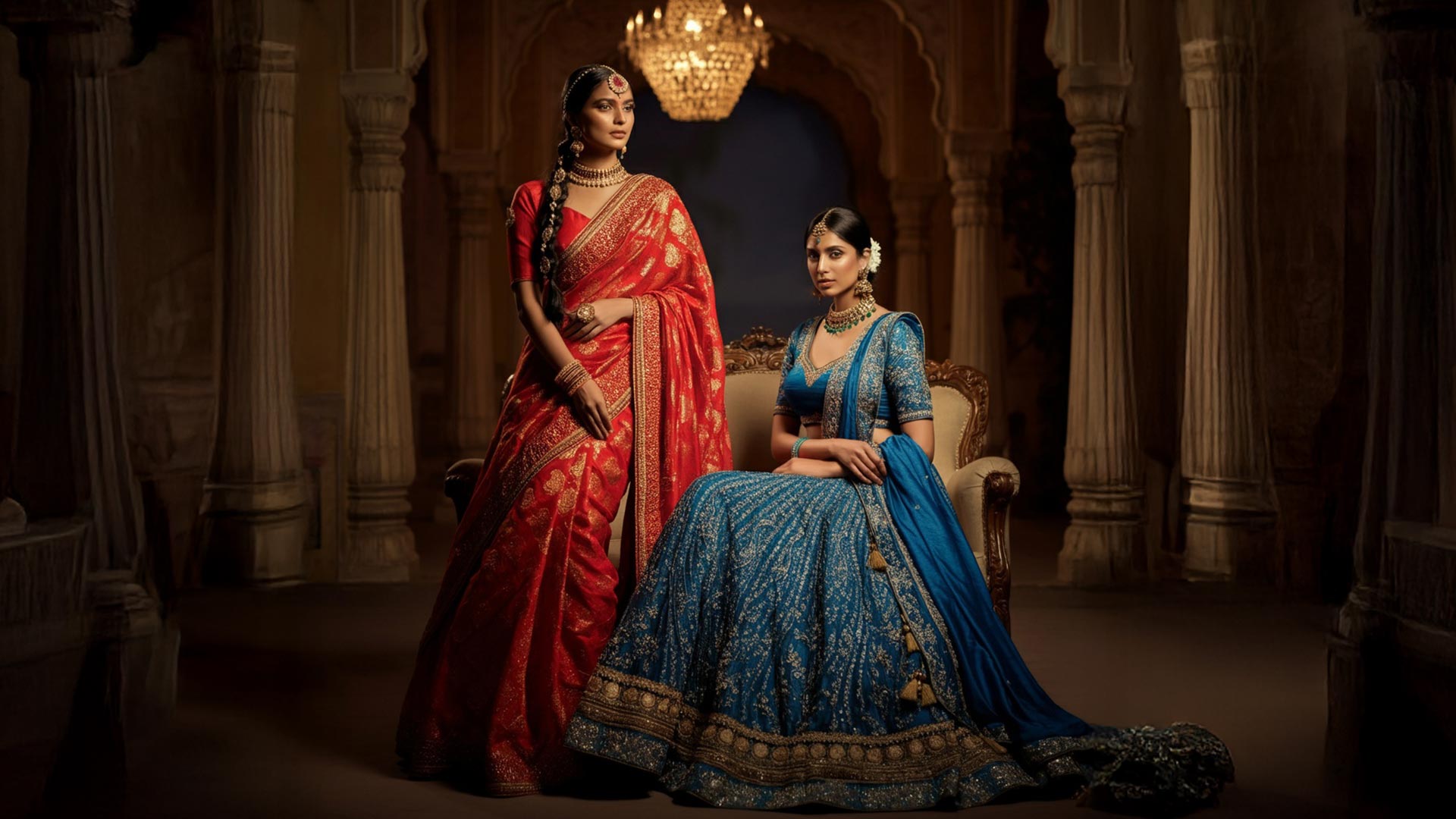A Look at the Timeless Weaving Tradition
India's handloom legacy is a cloth woven together with lore, skill, and tradition. In India's many joys of weaving, the Korvai Saree is set as an ideal case of beauty and meticulous craftsmanship. Nurtured in Tamil Nadu, particularly in the centers of Kanchipuram, Korvai sarees have carved a niche - not so much because of the way they appear, but because of the masterful weaving technique that makes them agelessly timeless.
But why is the Korvai silk saree so special? Why is it such a prized possession in the collection of every saree enthusiast? Let us discover the history behind this weaving marvel. 
What Does "Korvai" Mean?
The term "Korvai" is actually "joining" or "interlocking" in Tamil and this is the magic of the saree's exclusivity. In a regular saree where the body and borders are woven as one piece on the loom, there is a fascinating contrast in a Korvai saree, where the body and borders are separately woven and interlocked with a highly accurate technique.
This is an abrupt dramatic shift, characteristic of the Korvai Kanjivaram sarees, of the rich silk body - usually in a single loud color - giving way abruptly to bright and elaborate borders and pallu (the corner section), highly elaborately woven in a completely different color and motif.
The Art of Korvai Weaving - A Test of Skill
Korvai weaving is not easy. Two weavers have to work on the same saree - one for the body and another for the ends. It is executed on a traditional three-shuttle loom where the master shuttle weaves the body and two other shuttles weave each end.
The joining of body and border is joined extremely firmly with a unique method called "petni" or "korvai technique," everything by hand. It renders the joining unseen but a part of it, leaving the saree intact and not unravelling at the seams later. No wonder it might take weeks or months to weave a Korvai silk saree depending on the pattern complexity.
Signature Elements of Korvai Silk Sarees
1. Dramatic Color Contrasts
One of the most sought-after elements of Korvai Kanjivaram sarees is the dramatic use of colors. The body is typically in a dark, solid color (e.g., emerald green, royal blue, or maroon), while the borders and pallu sparkle with contrasting gold, red, or violet colors.
2. Rich Zari's Work
The border and pallu parts are embellished with unstitched pure zari (silver or gold) in the form of motifs like peacocks, temple borders, yali (mythical creatures), elephants, mangoes, and flower motifs.
3. Durability & Weight
Owing to the two-shuttle weaving and use of thick mulberry silk, Korvai sarees weigh more and are more durable compared to ordinary silk sarees. Sarees of decades past are still handed down to the next generations as family treasures.
4. Craftsmanship
The Korvai saree belongs in the hands of its artisans. It is passed down from generation to generation and brings with it the dexterity of every weaver; thus, they make each saree possess an individual aspect that cannot be attained through machine-made fabric.

Korvai Kanjivaram Sarees - The Queen of Silks
When you combine the Korvai technique with Kanjivaram silk, all you end up with is a masterpiece - Korvai Kanjivaram sarees. They are otherwise referred to as the "queen of silks" due to their majesty, opulence, and royal beauty. Formerly dressed on wedding days and temple festival celebrations, they were the very heights of South Indian bridal fashion.
With temple-hall elegance, temple-pattern prints, and gold zari intricately embroidered in every corner, Korvai Kanjivaram sarees are not mere garments they breathe history.
Why Are Korvai Sarees So Expensive?
The price on a Korvai silk saree might appear extravagant at first sight, but when you factor in the work involved in making it, it all fits into place:
· Two weavers per saree for a time-consuming process
· Pure silk and zari are used.
· Manpower-intensive approach, weeks or months per unit
· Hand-fashioned artistry, not factory-made
· Diacritical nuances with cultural motifs and ancient themes
Each saree is a painting, and no two Korvai sarees are ever identical.
Modern Additions to a Timeless Classic
While tradition-orientated, Korvai sarees are also being experimented with by new designers and weavers in new forms. From the light office-wear version of it to minimalist fusion designs involving minimal zari work, the Korvai silk sarees of the new breed are defying all fashion conventions.
Korvai interlocks are now being paired with digital prints, pastel hues, and geometric borders captivating a generation that worships tradition as much as fashion.
How to Identify an Original Korvai Saree?
1. Compare Borders: If the body and borders are joined into one without a seam but of different colors/materials, then it is Korvai.
2. Joint Texture: Place your fingers across the interlock it would be hard but not rough.
3. Price: Genuine Korvai Kanjivaram sarees will not be cheap. Approach unnaturally low-priced ones with caution.
4. Craft Marks: The majority of original work comes with handloom stickers or Geographical Indication (GI) stickers.

Last Words
In a world of fast fashion and mass-produced fabric, the Korvai Saree is a testament to slow, laborious, and deliberate toil. It's not merely an item of clothing it's India's celebration of the arts, a symbol of identity, and a precious family heirloom handed down through generations.
Whether you are a saree enthusiast, a bride-to-be, or one discovering Indian handlooms for the first time, having a Korvai silk saree is having a piece of history in your hands. Its beauty, craftsmanship, and cultural richness make it not just one-of-a-kind but timeless.








